INDIAN ARMED FORCES CHIEFS ON
OUR RELENTLESS AND FOCUSED PUBLISHING EFFORTS

SP Guide Publications puts forth a well compiled articulation of issues, pursuits and accomplishments of the Indian Army, over the years

I am confident that SP Guide Publications would continue to inform, inspire and influence.

My compliments to SP Guide Publications for informative and credible reportage on contemporary aerospace issues over the past six decades.
The arrival of beauty and the beast
Five Rafale - “Delight to Fight” as said by a senior from IAF, out of the 36 finalised in an intergovernmental deal with France by Prime Minister Modi, arrived on Wednesday at Ambala and are to be formally inducted in the IAF in August

India took a significant step in strengthening air power and defence preparedness with the first five Rafale fighter aircraft, built by Dassault, flying out from Merignac airbase in Bordeaux, France to India. These five Indian Air Force (IAF) Rafale aircraft arrived at Air Force Station, Ambala on Wednesday, July 29, 2020. Planned in two stages, the ferry from France was undertaken by Indian Air Force (IAF) pilots who had been undergoing training there. The Medium Multi-Role Combat Aircraft (MMRCA) aircraft covered a distance of nearly 8,500 km from France to India. The three single-seat and two twin-seat omni-role fighters were flown by seven IAF pilots and led by Commanding Officer Group Captain Harkirat Singh. Air Chief Marshal R.K.S. Bhadauria visited Ambala to receive this first batch of five Rafale combat aircraft arriving from France.
PM WELCOMES RAFALE; DM CALLS IT A TIMELY BOOST
As the Rafale jets landed in Ambala, the Prime Minister welcomed the aircraft with a tweet containing a few verses in Sanskrit along with a brief video of the landing at the Ambala Air Force station.
The tweet roughly translates into, “There is no virtue like protecting the nation, there is no vow like defence of the nation and there is no sacrifice like the defence of the nation. You who touch the skies, welcome”. This highlighted the importance of national security and strengthened the role of Rafale, coming straight from the leader of the nation.
Defence Minister Rajnath Singh welcomed the aircraft by saying, “The Birds have entered the Indian airspace... Happy Landing in Ambala!” The Minister congratulated the IAF on professionally executing the ferry and said, “I am sure that 17 Squadron, the Golden Arrows, will continue to live upto their motto of ‘Udayam Ajasram’. I am extremely happy that IAF’s combat capability has got a timely boost.”
He further said that the touchdown of Rafale combat aircraft in India marks the beginning of a new era in our Military History. These multirole aircraft will revolutionise the capabilities of the IAF. Highlighting the capabilities of the aircraft, Singh also remarked that, “This aircraft has very good flying performance and its weapons, radar and other sensors and electronic warfare capabilities are amongst the best in the world. Its arrival in India will make the IAF much stronger to deter any threat that may be posed on our country.”
The IAF stated that the aircraft will be a part of 17 Squadron, the “Golden Arrows”, which was resurrected on September 10, 2019. The Squadron was originally raised at Air Force Station, Ambala on October 1, 1951
Rajnath Singh thanked Prime Minister Narendra Modi for his right decision. “The Rafale jets were purchased only because Prime Minister took the right decision to get these aircraft through an Inter-Governmental Agreement with France, after the long pending procurement case for them could not progress.” He also thanked the French Government, Dassault Aviation and other French companies for ensuring the timely delivery of the aircraft and its weapons, despite the severe restrictions posed by COVID-19 pandemic.
Defence Minister Singh added that, “The Rafale jets were purchased when they fully met the operational requirements of the IAF. The baseless allegations against this procurement have already been answered and settled.” He added, “If it is anyone who should be worried about or critical about this new capability of the Indian Air Force, it should be those who want to threaten our territorial integrity.”
Induction of Rafale fighters into IAF: A Timeline
2001
- 2001: IAF conveys requirement for 126 Mirage 2000 fighters as replacement for legacy MiG variants. Foreign fighter needed because of big delay in indigenous LCA programme.
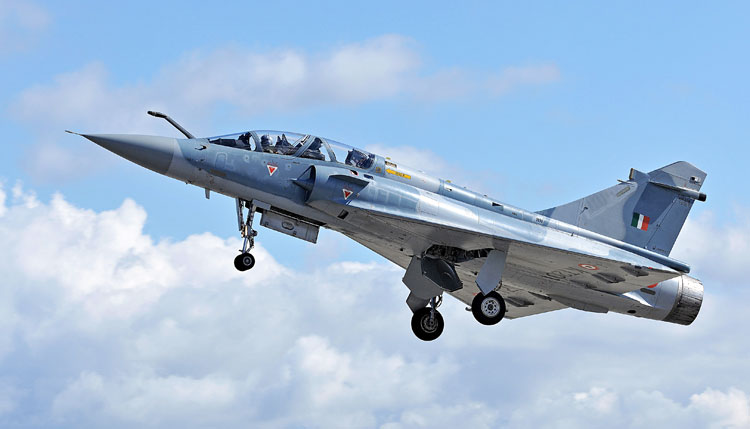
2001-2004
- 2001-2004: Government accepts necessity of foreign supplied fighters but rejects single-vendor procurement, decides to acquire fighters through global tender route.
- November 2004: IAF issues RFI to Russia’s Mikoyan Gurevich/Rosboronexport for MiG-29, American Lockheed Martin for F-16, Swedish Saab for Gripen and French Dassault for Mirage 2000 as a precursor to the biggest global tender for fighter aircraft.
2005
- June 2005: India agrees to include American Boeing and European consortium Eurofighter for the F/A-18 Super Hornet & Typhoon respectively into the competition, now labelled the Medium Multi-Role Fighter Aircraft (MMRCA) programme.
2006
- February 2006: France offers to shift the Mirage 2000 line to India outside of the competition. Upon India’s rejection of this “unsolicited proposal”, Dassault withdraws the offer for Mirage 2000 and offers the Rafale instead.
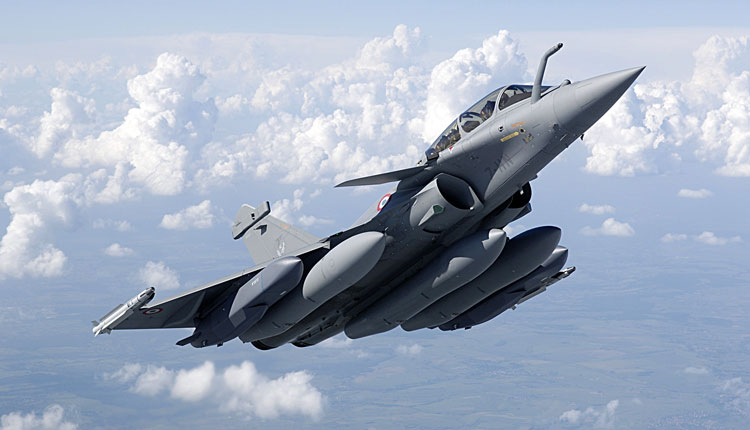
2007
- August 28, 2007: India issues RFP for procurement of 126 MMRCA to Rosboronexport (MiG-29/35), Lockheed Martin (F-16), Saab (Gripen), Dassault (Rafale), Boeing (F/A-18) & Eurofighter (Typhoon) to set up the final line-up for the competition.
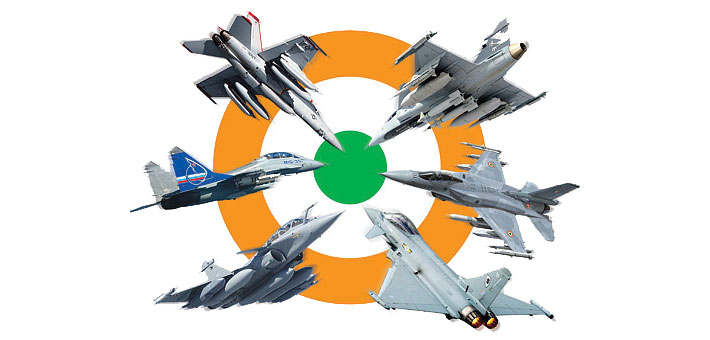
2011
- May 2011: IAF shortlists Rafale & Eurofighter after extensive technical & flight trials.
2012
- January 2012: Dassault bid for the Rafale declared L1.
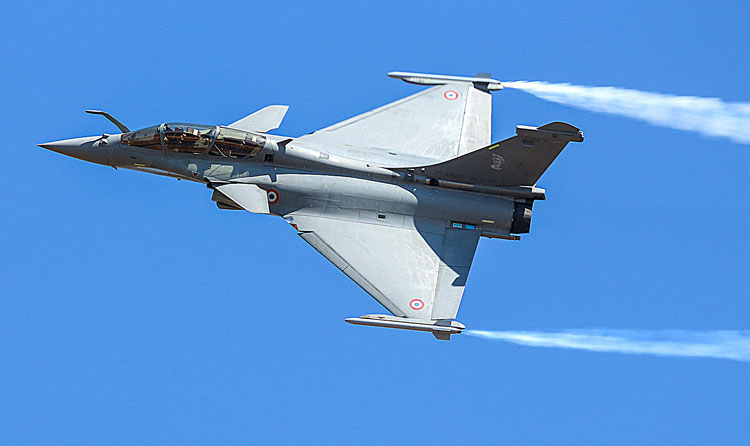
2014
- March 2014: Workshare agreement signed between HAL & Dassault for building 108 Rafale fighters in a 70:30 ratio. First 18 jets intended to be delivered in flyaway condition by Dassault.
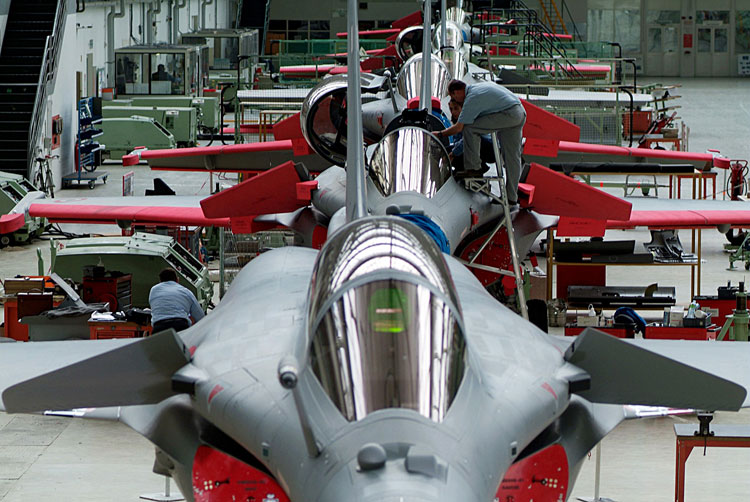
2015
- April 8, 2015: The then Foreign Secretary says detailed discussions underway between MoD, HAL & Dassault amidst reports of an impasse on account of labour costs and acceptance of responsibility for the jets to be made in India under license.
- April 10, 2015: New deal for acquisition of 36 Rafale fighters in fly-away condition announced after a Summit meeting between Prime Minister Narendra Modi and French President Francois Hollande in Paris.
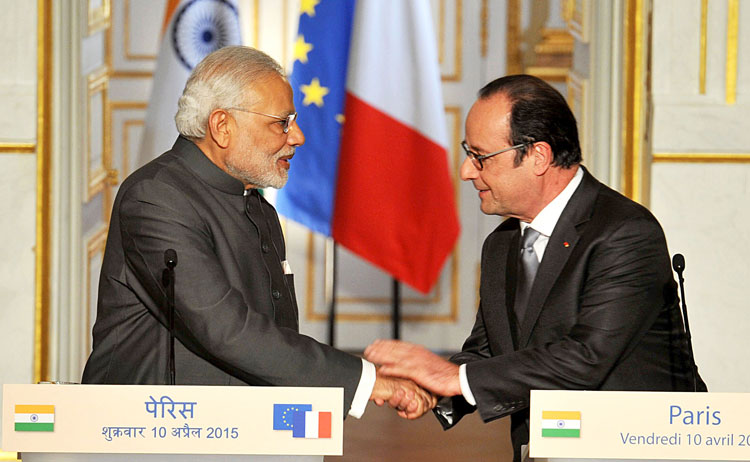
- July 30, 2015: India announces withdrawal of the MMRCA tender for 126 aircraft.
2016
- January 26, 2016: India, France sign MoU for the acquisition of 36 Rafale fighters for the IAF.
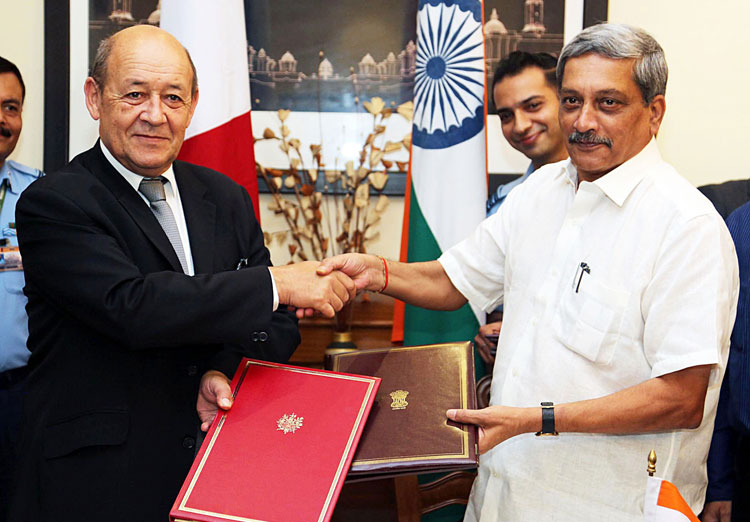
- September 23, 2016: India signs a 60,000 Crore Inter-Governmental Agreement with France for the purchase of 36 Rafale fighters. First jet to be delivered after 36 months. All 36 to be delivered by April 2022.
2019
- October 8, 2019: First IAF Rafale ceremonially handed over to Defence Minister Rajnath Singh at Dassault’s Merignac facility near Bordeaux in South-West France. Singh performs Shastra Puja while accepting to the aircraft, flies tandem Rafale sortie.
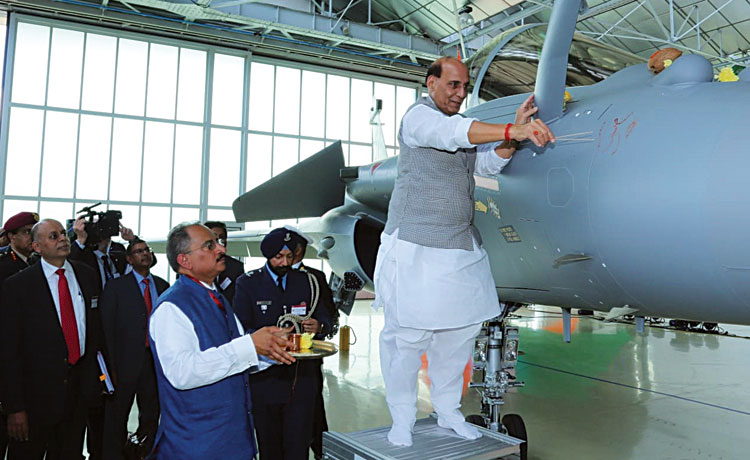
2020
- July 29, 2020: The first batch of 5 Rafale fighters fly in to the Ambala airbase in the resurrected 17 (Golden Arrow) Squadron. Group Captain Harkirat Singh is the first Commanding Officer of the IAF’s first Rafale squadron.
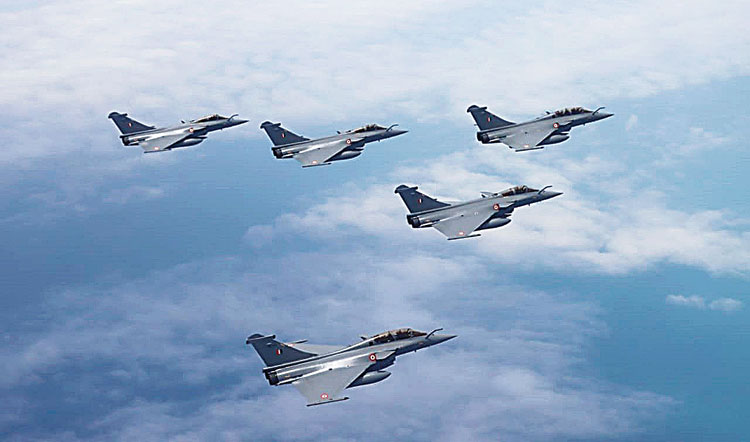
RAFALE – 17 “GOLDEN ARROWS” SQUADRON OF THE IAF
The IAF stated that the aircraft will be a part of 17 Squadron, the “Golden Arrows”, which was resurrected on September 10, 2019. The Squadron was originally raised at Air Force Station, Ambala on October 1, 1951. The 17 Squadron has many firsts to its credit; in 1955 it was equipped with first jet fighter, the legendary De Havilland Vampire. In August 1957, the Squadron became the first to convert on to a swept wing fighter, the Hawker Hunter, IAF highlighted. A formal induction ceremony of Rafale aircraft in 17 Squadron is scheduled to be held in the second half of August 2020, IAF informed.
The arrival of the first five of Rafale from the multi billion dollar deal has been amid tensions persisting along the defacto border of India and China. Indian and Chinese forces were locked in a six-week-long standoff along their border that peaked with a hand-to-hand battle in which 20 Indian soldiers were killed last month. These fighters, dubbed “game-changers” by IAF, have touched down in the middle of the ongoing military confrontation with China. Thus the timing of combat jets’ arrival has further gained spotlight on as they were greeted with a water-cannon guard of honour when they landed at the Ambala air base in Haryana. While the first squadron of the Rafale jets is expected to be stationed at Ambala air base, the second one will apparently be based at Hasimara air base in West Bengal.
FROM FRANCE TO INDIA
This also marks a new milestone in the strong and growing India-France defence cooperation, stated the press statement issued by the Embassy of India, Paris. India’s Ambassador to France, Jawed Ashraf was there to see off Rafale aircraft. He said that the long awaited and much needed two squadrons of Rafale would add great strength to IAF and our defence capabilities. He met the IAF pilots and wished them a safe flight to India. He congratulated them on becoming the first Indian pilots to fly one of the most advanced and potent fighter aircraft in the world and wished them success in meeting the nation’s expectation of playing an important role in India’s defence. He called the Rafale, the real beauty and the beast and an aircraft that is swift, nimble, versatile, advanced and lethal.
The first stage of the flight covered a distance of 5,800 km in seven and a half hours. The aircraft got airborne from Dassault Aviation Facility, Merignac, France on the morning of July 27, 2020 and reached India on Wednesday afternoon with a planned stopover en-route at Al Dhafra airbase in the UAE.
RAFALE, A MAJOR QUALITATI VE ADDITION TO COMBAT CAPABILITIES
Even if these are only five of the aircraft, to be joining the IAF, it is certainly a qualitative addition to the combat capabilities of the Indian Air Force (IAF) and hold omni-potential possibilities. The ability to strike air-to-air targets from up to 150 km away and safely hit land targets 300 km within enemy territory make India’s Rafales some of the deadliest fighter jets flying in the world. The Frenchmade Rafales, known for air-superiority and precision strikes, are India’s first major acquisition of fighter planes in 23 years after the Sukhoi jets were imported from Russia.
The state-of-the-art 4.5 Generation Rafale jet can reach almost double the speed of sound, with a top speed of 1.8 Mach.The aircraft can carry a range of potent weapons including European missile maker MBDA’s Meteor beyond visual range air-to-air missile, SCALP cruise missiles and MICA weapons system will be the mainstay of the weapons package of the Rafale jets.
Meteor is the next generation of BVR (Beyond Visual Range) air-to-air missile (BVRAAM) designed to combat common threats facing the UK, Germany, Italy, France, Spain and Sweden. The Meteor is powered by a unique rocket-ramjet motor that gives it far more engine power for much longer than any other missile. The Meteor missile can target enemy aircraft from 150 km away and destroy enemy aircraft before they actually even get close to the Indian aircraft.
The SCALP cruise missiles are capable of hitting the targets 300 km away while the MICA is a very versatile air-to-air missile. It comes with a radar seeker, an infrared seeker and it can be fired for the short-range to long-range, right up to a 100 km. The Indian Air Force is also procuring new generation medium-range modular air-to-ground weapon system Hammer to integrate with the Rafale jets. Hammer (Highly Agile Modular Munition Extended Range) is a precision-guided missile developed by French defence major Safran.
Apart from the weapons, Rafale also fly with SPECTRA - widely considered to be the world’s most advanced fighter-based electronic warfare suite, a system which is the cornerstone of the Rafale’s survivability against a host of latest threats. By detecting threats at long-range, SPECTRA allows the pilot to instantly select the best suited defensive measures combining radar jamming of ground and airborne radars and the deployment of infrared or radar decoying flares and chaff.
Flown by French forces, the Rafale has also been used in operations in Afghanistan, Libya, Mali, Iraq and Syria, Dassault Aviation says on its website.
French Air Force (FAF) Tanker provided dedicated Air-to-Air Refuelling support during the flight. The second stage of the flight covering over 2,700 km was carried out with Air-to-Air Refuelling by IAF Tanker. The Ambassador as well as the IAF appreciated the proactive support provided by the French Government and Industry in France to ensure timely delivery. The tanker support extended by FAF during the ferry was crucial in ensuring that the long haul flight was accomplished successfully and in a time bound manner.
The five Rafale aircraft were escorted by two armed SU-30MKIs as they entered Indian airspace. Captain of the Indian Naval Ship (INS) Kolkata welcomed Rafale Arrow Leader in the Indian Ocean by saying, “May you touch the sky with glory.”
In April 2015, Prime Minister Narendra Modi had announced the purchase of 36 Rafale jets after talks with the then French President Francois Hollande during his visit to the country. A deal was finalised when Hollande visited New Delhi to participate in the Republic Day celebrations in January 2016. The arrival of the aircraft comes two decades after IAF first demanded such fighters. The first Rafale fighter was handed over to the IAF in October 2019 in a ceremony attended by the French Minister for Armed Forces Madame Florence Parly and the Indian Defence Minister Rajnath Singh. Delivery of ten aircraft has been completed on schedule. Five of these have arrived and the remaining five will stay back in France for training mission. The delivery of all thirty six aircraft will be completed on schedule by the end of 2021.
In accordance with the contract, IAF pilots and supporting personnel have been provided full training on the aircraft and weapon systems by Dassault and further batches of IAF personnel will continue training over the next nine months





